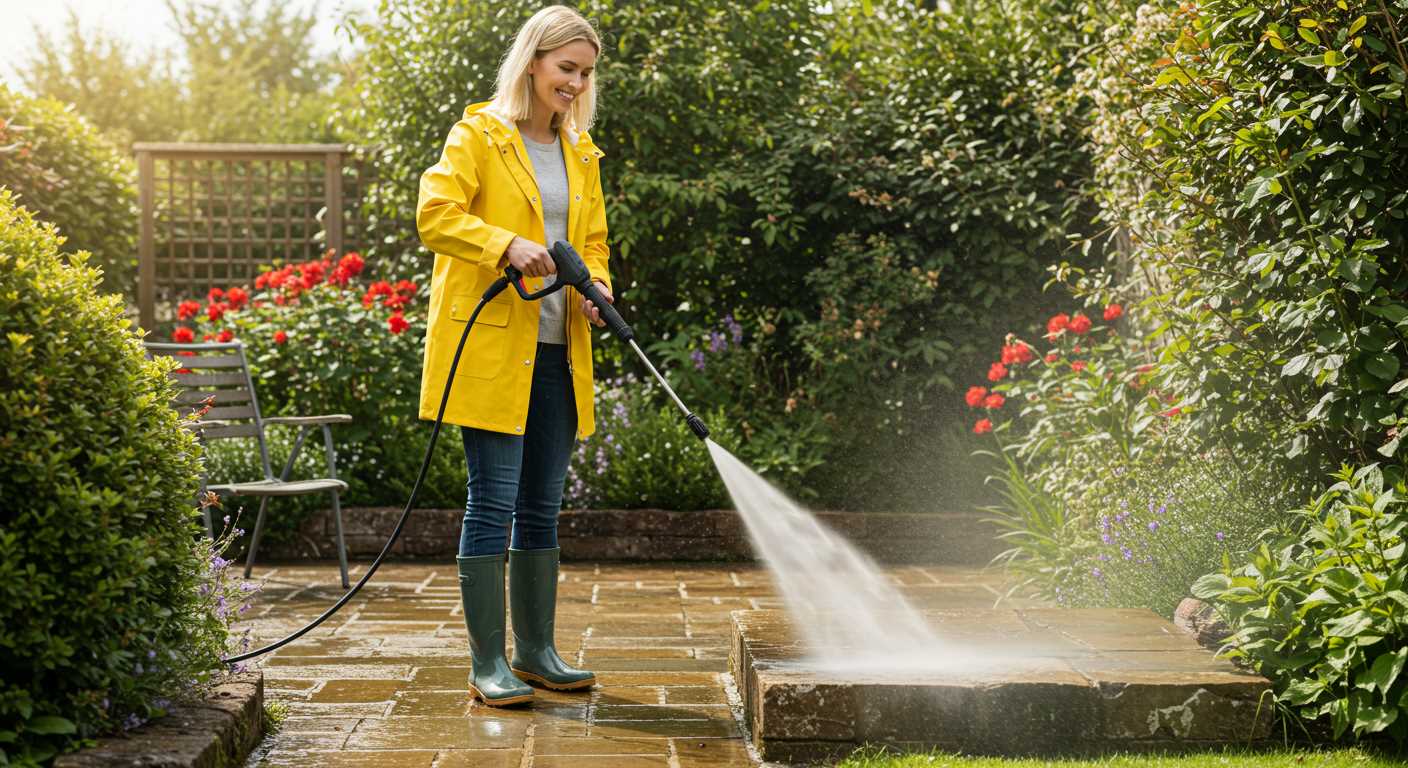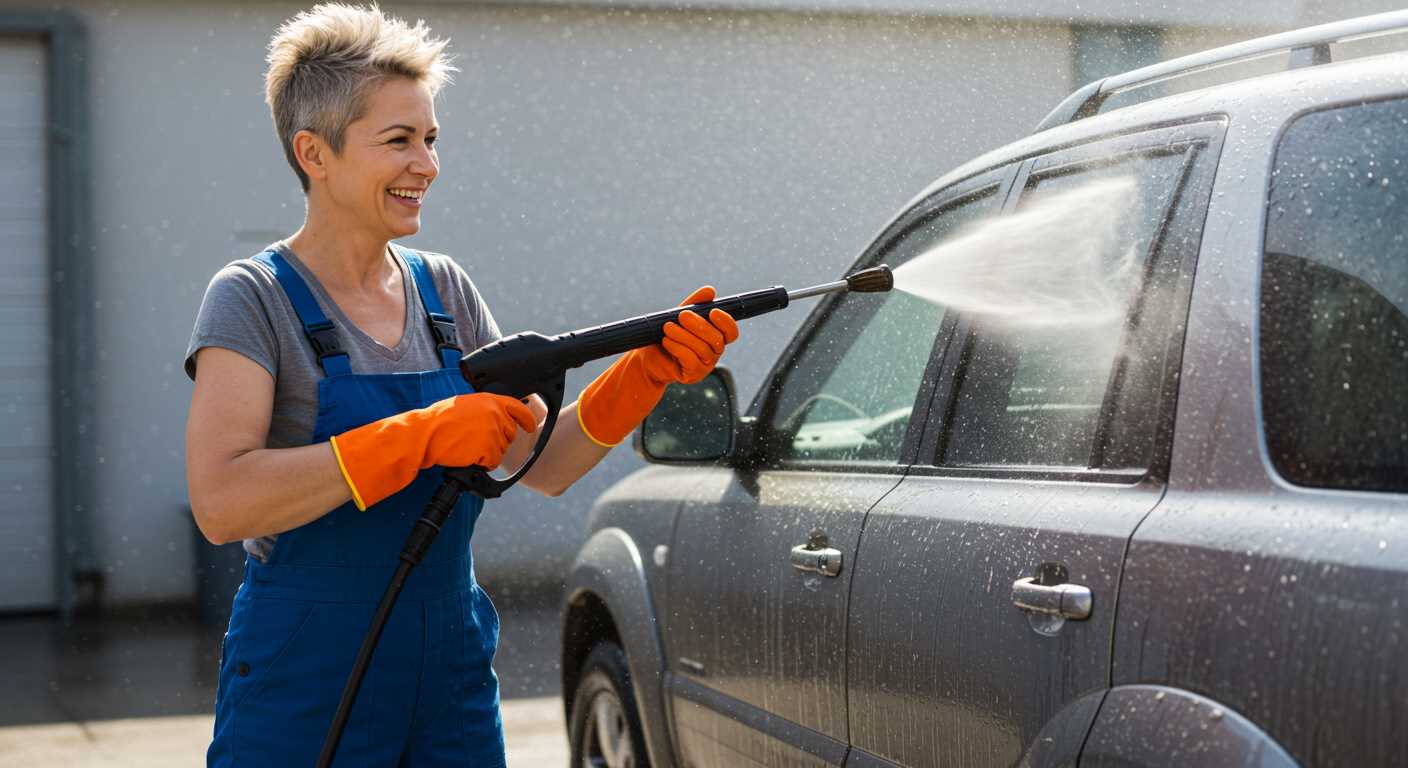



In my experience as a consultant and product expert for over a decade, I can confidently say that mastering a high-pressure cleaning device isn’t as daunting as some may fear. With the right preparation and a few simple guidelines, anyone can handle this task effectively. Understanding the mechanics and functionality of the equipment is key to achieving optimal results without any unnecessary hassle.
To get started, choose a model suited to your specific needs. Familiarise yourself with different nozzles and their applications. For instance, a wider spray pattern is ideal for large surfaces, while a narrow stream is better for tackling stubborn stains. It’s also important to maintain a safe distance from the surface to avoid damage.
Prior to operation, make sure to check the unit’s settings and ensure you have the right cleaning solution if needed. It’s advisable to conduct a quick test on a smaller, inconspicuous area. This practice allows you to adjust the pressure and technique before addressing the main cleaning task.
Finally, always prioritise safety by wearing appropriate protective gear, such as gloves and goggles. With these precautions and knowledge in hand, utilising a high-pressure cleaning device can become a straightforward and rewarding experience.
Understanding the Basics of Pressure Washing
Begin with identifying the right nozzle for the task; different tasks require varying levels of intensity, typically ranging from 0° to 40°. A red nozzle is for narrow jets useful for tough stains, while a white or green nozzle works best for surfaces like cars and decking.
Familiarise yourself with the machine settings before operation. Adjusting the pressure according to the surface is crucial; softer settings are ideal for delicate items like windows, while tougher surfaces can handle higher force.
Water quality matters. If you’re drawing from a tank or well, use clean water without contaminants that could damage the equipment or surface. If possible, filter the water to prevent sediment buildup.
Before starting, check for any obstructions or fragile items nearby that could be affected by the water spray. Maintaining a safe distance from windows or electric fixtures is advisable to reduce the risk of splashing or damaging any components.
After finishing your task, clean the equipment meticulously. This ensures longevity and prevents clogs in the hoses and nozzles. Run clean water through the system again post-usage for the best maintenance.
Lastly, safety gear is not optional. Use goggles and gloves to protect yourself from debris and high-pressure water. This simple protective measure can save you from potential injuries during operation.
Choosing the Right Pressure Washer for Your Needs

To find a suitable cleaning machine, first determine your intended tasks. For light-duty jobs like washing cars or patios, an electric model with a pressure rating of 1200-2000 PSI is adequate. If tackling stubborn grime on driveways or deck refurbishments, opt for a gasoline-powered unit rated between 2500-3500 PSI for enhanced performance.
Power Source
Electric versions are quieter, require less maintenance, and are ideal for residential areas with access to power outlets. However, they are less portable than their gasoline counterparts, which offer greater mobility and power. If your cleaning needs span large outdoor spaces, a gasoline model provides the manoeuvrability required for comprehensive tasks.
Features and Accessories
Look for adjustable nozzles or interchangeable tips to control the water spray pattern. A model with a detergent tank can simplify the application of cleaning solutions, while built-in hose reels help manage storage and reduce tangles. Wheels should be sturdy for easy transport, especially for larger machines.
Invest in a machine equipped with a solid warranty. Such coverage reflects manufacturer confidence in their product’s durability and can save significant costs on repairs or replacements. Research customer reviews and recommendations to ensure reliability and satisfaction with the chosen model.
Safety Precautions When Operating a Pressure Washer
Always wear personal protective equipment, including safety goggles, gloves, and non-slip footwear, to shield yourself from debris and high-pressure water spray.
Be cautious of your surroundings. Ensure the area is clear of obstructions, pets, and people to prevent accidents. Additionally, secure any loose items that might get knocked over.
Check connections and hoses for leaks before starting. A damaged hose can lead to sudden bursts of water, posing a risk to you and bystanders.
Maintain a firm grip on the lance while operating the unit. The force of the water can cause it to recoil, making it difficult to control if not handled properly.
Position yourself at a safe distance from the surface you are cleaning. Start with the nozzle far away and gradually decrease the distance to gauge the force needed without causing damage.
Store your equipment in a dry place after each use to prevent corrosion and ensure longevity. Additionally, protect the machine from extreme weather conditions.
Before tackling elevated surfaces, ensure you are using proper ladders or scaffolding for stability. Never attempt to reach high areas from unstable positions.
Be mindful when using detergents or additives. Follow the manufacturer’s recommendations for dilution and application to avoid chemical reactions that may be hazardous.
Have a first-aid kit accessible nearby in case of injury. Familiarise yourself with its contents and ensure you know how to address common injuries associated with this equipment.
Lastly, always read and follow the owner’s manual for operational and safety instructions specific to your model. This step is crucial for ensuring safe and effective performance.
Common Mistakes to Avoid While Pressure Washing

Avoid the temptation to start without proper surface preparation. Rinsing surfaces, ensuring loose debris or dirt is cleared beforehand, can significantly enhance cleaning results.
Don’t overlook the importance of selecting the suitable nozzle for the task. Using an incorrect nozzle can cause damage to surfaces, ranging from etching wood to cracking concrete.
Be cautious with your distance from the surface. Holding the spray too close can lead to unintended harm. Maintaining the right distance helps achieve optimal results without causing damage.
Neglecting to check for chemicals compatibility is a frequent blunder. Some cleaning agents can react negatively with various materials, compromising your project or creating hazardous situations.
Failing to adhere to a systematic technique often results in uneven cleaning. Work methodically, overlapping each stroke slightly to ensure complete and consistent coverage without streaks.
Don’t forget about personal safety measures. Protective goggles and gloves are vital when handling both the equipment and any cleaning agents. This small step can prevent severe injuries and skin reactions.
Utilising improper power settings is another mistake that many make. It’s crucial to adjust the pressure according to the surface you’re addressing–different materials require varying levels of force.
Lastly, many people underestimate the importance of regular maintenance on their tools. Yearly checks and servicing not only extend lifespan but also improve performance efficiency, resulting in better outcomes.
Techniques for Different Surfaces: What Works Best?
For concrete surfaces, I recommend starting with a nozzle that has a 25-degree angle. This setting effectively lifts dirt and grime without causing damage. Maintain a distance of about 12 inches from the surface for optimal results.
Wooden Decks
.jpg)
When dealing with wooden decks, opt for a low-pressure setting with a 40-degree nozzle. Keeping the distance to 18 inches reduces the risk of splintering wood. Move the wand in the direction of the wood grain for even cleaning.
Cars and Vehicles
For vehicles, stick with a nozzle that has a wider spray, usually a 40-degree attachment. This allows for gentle cleansing, keeping a distance of at least 24 inches to protect the paintwork. Avoid spraying directly at the undercarriage unless using a specifically designed attachment to prevent trapped moisture.
Maintenance Tips for Long-Lasting Performance
Regular care is crucial for maintaining peak operation of your cleaning equipment. Begin with a thorough cleaning after each session to prevent build-up, especially around nozzles and filters.
Routine Checks
- Inspect hoses for cracks or leaks. Replace if needed.
- Ensure all connections are tight to prevent loss of power.
- Examine the power cord for signs of wear or fraying.
Yearly Maintenance
- Flush the system with clean water to eliminate debris.
- Change oil if your model requires it, as it keeps the motor running smoothly.
- Replace worn-out seals to prevent leaks and maintain pressure.
Store the equipment in a dry environment to protect it from moisture, and avoid leaving it exposed to extreme climates. A well-maintained unit not only lasts longer but also operates at optimal efficiency, ensuring that you achieve excellent results every time.







